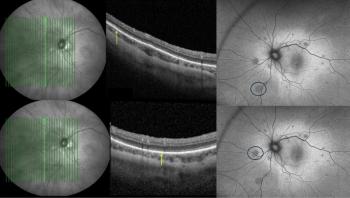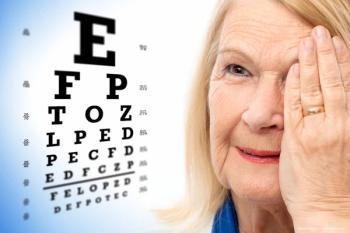
Intraoperative online pachymetry important safety feature
An initial clinical evaluation of the new ESIRIS excimer laser with integrated, online, optical coherence pachymetry (Schwind), showed that constant corneal monitoring is an important safety feature for LASIK procedures, Kumar J. Doctor said.
An initial clinical evaluation of the new ESIRIS excimer laser with integrated, online, optical coherence pachymetry (Schwind), showed that constant corneal monitoring is an important safety feature for LASIK procedures, Kumar J. Doctor said.
The study recruited 25 patients with myopia and myopic astigmatism. Optical pachymetry assessed corneal thickness and observed all eyes during all the steps of LASIK. The study used a 130 micron head for 46 eyes and 110 micron head for four eyes using the Carriazo Pendular microkeratome.
Attempted mean spherical equivalent refraction was 4.0 D (+/-3.0 D) and cylinder was, -1.0D (+/-0.50 D), with a mean calculated stromal depth of 80 (+/- 22) microns. Mean flap thickness was 115 (+/-15) microns and in every case achieved a residual corneal stroma of more than 250 microns. The immediate postoperative evaluation showed swelling of the cornea.
Pre- and postoperative central cornea thickness measurements showed a mean decrease from 503 microns (range: 431-599) to 423 (387-512) microns.
Dr Doctor of the Doctor Eye Institute, Mumbai, India, said safety required measurement of the flap thickness directly after the flap cut and it needed measurement of the ablation progress during LASIK treatment for a better control of the residual stromal thickness.
"This system of online pachymetry during LASIK is reproducible to the extent of 1 to 2 microns," said Dr Doctor. "Evaluation of residual corneal thickness is crucial to prevent corneal ectasia," he insisted, adding that the Schwind laser is a good and accurate system.
Ophthalmology Times Europe reporting from the XXIV Congress of the ESCRS, London, 9-13 September, 2006.
Newsletter
Get the essential updates shaping the future of pharma manufacturing and compliance—subscribe today to Pharmaceutical Technology and never miss a breakthrough.













































